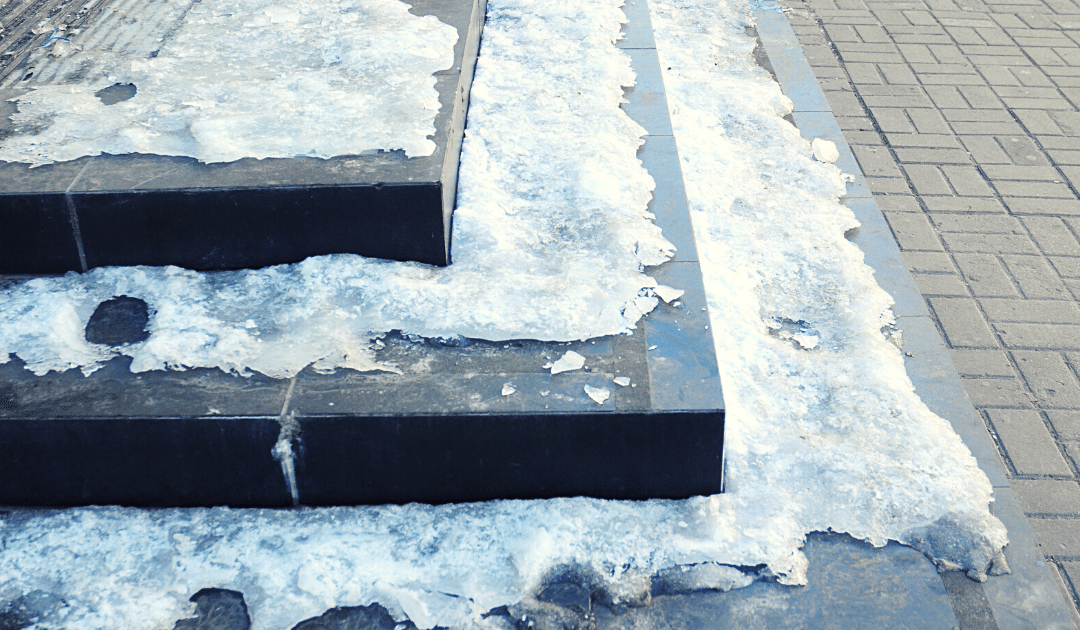
by California Casualty | Homeowners Insurance Info, Safety |
With cold weather comes extra hazards. Be on the lookout for these six common ones, so you can avoid injury, accidents, and damage to your home.
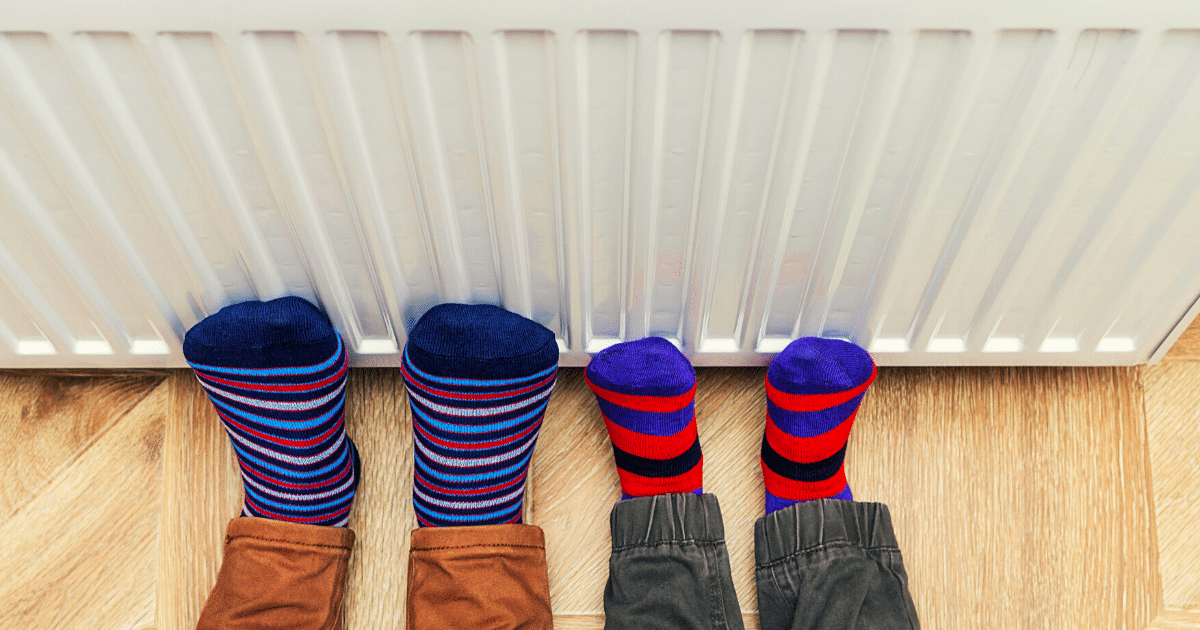
1. Unsafe Heaters and Furnaces
Make sure your heating system has been inspected by a professional (ideally well before winter arrives). This will ensure that it’s prepped for the hard work of heating your home through frigid temps and doesn’t break mid-season, leaving you scrambling for repairs. Here’s how you can keep it in working order:
-
- Wipe it down regularly to get rid of dust and debris; you can also gently vacuum it with a nozzle/brush attachment.
- Clean vents and adjust dampers in all rooms.
- Replace dirty filters as needed.
- Listen and watch for strange sounds or behavior. Do a visual check from time to time for frayed wires or other damage (pests can attack without your knowledge!).
- If you have a furnace, be sure to check the pilot light regularly (follow manufacturer’s instructions).
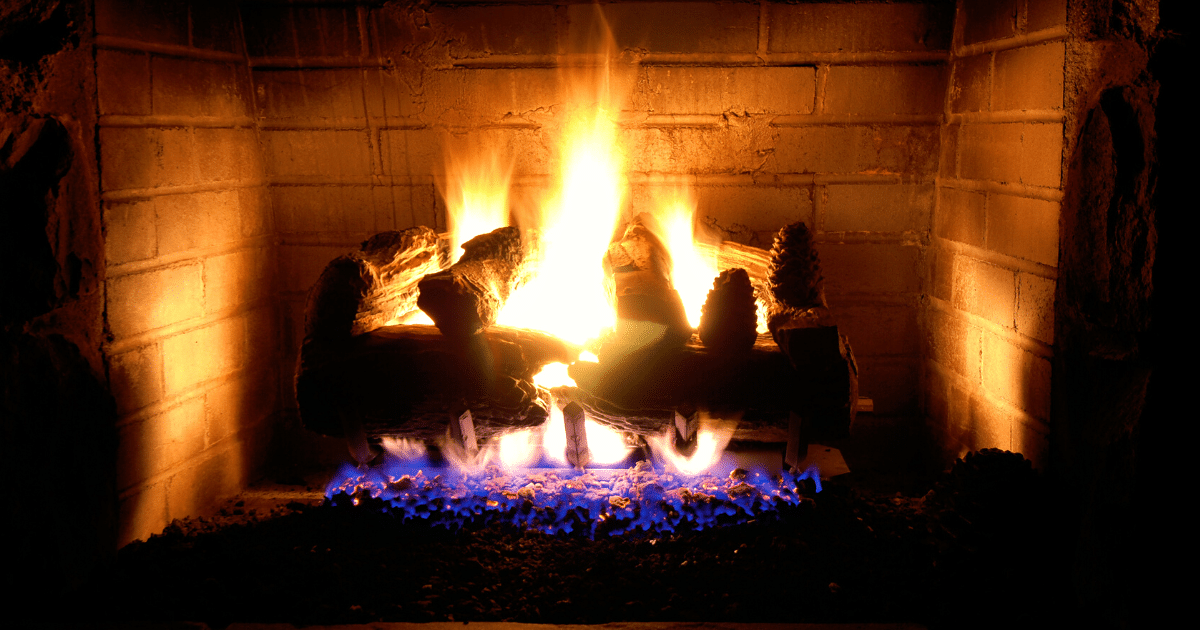
2. Fireplace Hazards
Like your heating system, your chimney, flue, and supporting structures need an annual inspection (and possible cleaning). Schedule inspections at the same time for an easy maintenance routine. Besides inspections, be sure to:
-
- Clean out ash after every fire – excess ash can reduce airflow and make your next fire dangerous.
- Never leave a fire unattended, and always make sure it’s completely extinguished before leaving it for the night.
- Use a fire screen for extra protection and consider fireplace doors if appropriate.
- Check your smoke and carbon monoxide alarms to make sure they’re working properly.
- For more indoor fire safety tips, check out our blog post.
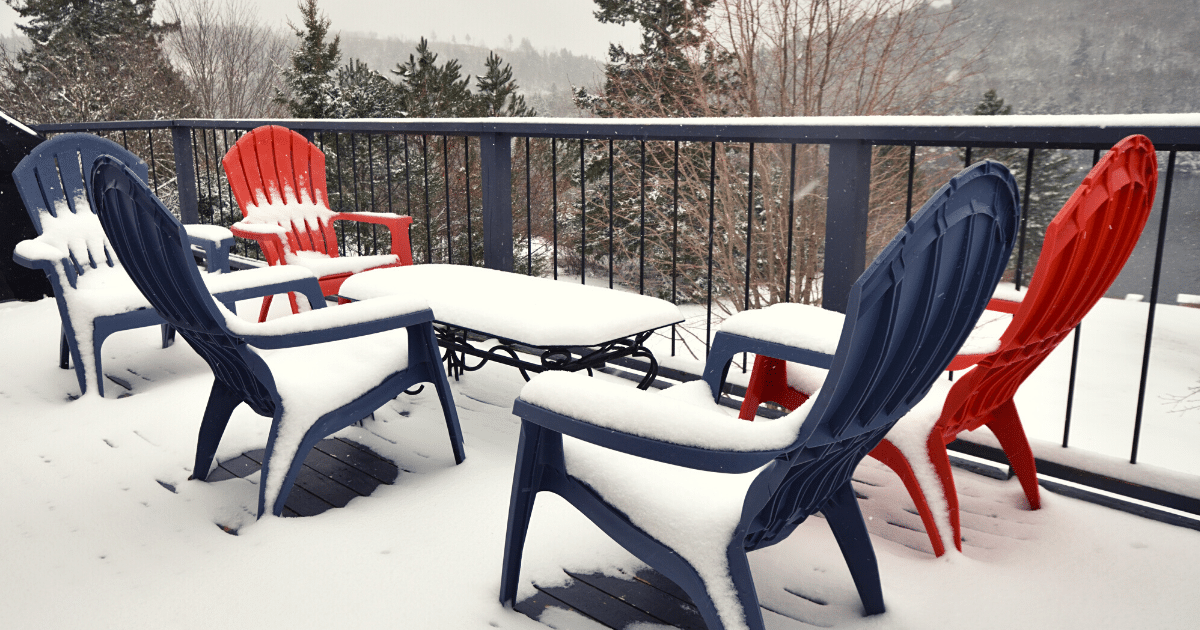
3. Porch and Deck Safety
The areas immediately surrounding your home and entrances pose a special risk for slips, falls, and other injuries resulting from ice. Protect yourself, your family, and any visitors with these precautions.
-
- Remove snow from decks, walkways, porches, and your driveway as soon as possible to prevent a melt-and-refreeze cycle (i.e. black ice).
- Consider slip-resistant finishes and coatings, deck strips, or even mats in high-traffic areas.
- Make sure handrails are secure and in good working order to provide stability when stairs are slick.

4. Gutters and Roofs
Following a theme from earlier on, it’s imperative to get your roof inspected annually so that you become aware of any problems and can get repairs done before winter sets in. Then, throughout the season:
-
- Keep gutters cleared out so that water goes down the spout where it’s supposed to, rather than finding other cracks or crannies to get into.
- If you live in a snowy area, clean gutters can also help prevent ice dams from forming and causing costly damage.
- Remove snow from your roof regularly with a roof rake.
- Use that same rake to remove any icicles that have formed.

5. Power Outage Prep
Snowstorms and freezes can easily take out power lines, leaving you in the cold and dark. Have your emergency plan and power back-up ready in case you need it. Additionally:
-
- Have a two-way radio for news concerning the outage (make sure it’s solar-powered, uses batteries, or is hand-crank).
- Have a hand-crank or solar-powered cellphone charger so you can keep in touch with family, neighbors, and friends.
- Invest in a generator, and always have flashlights, lanterns, and extra batteries on hand.
- If you don’t have an emergency kit or plan for your family, make one today.
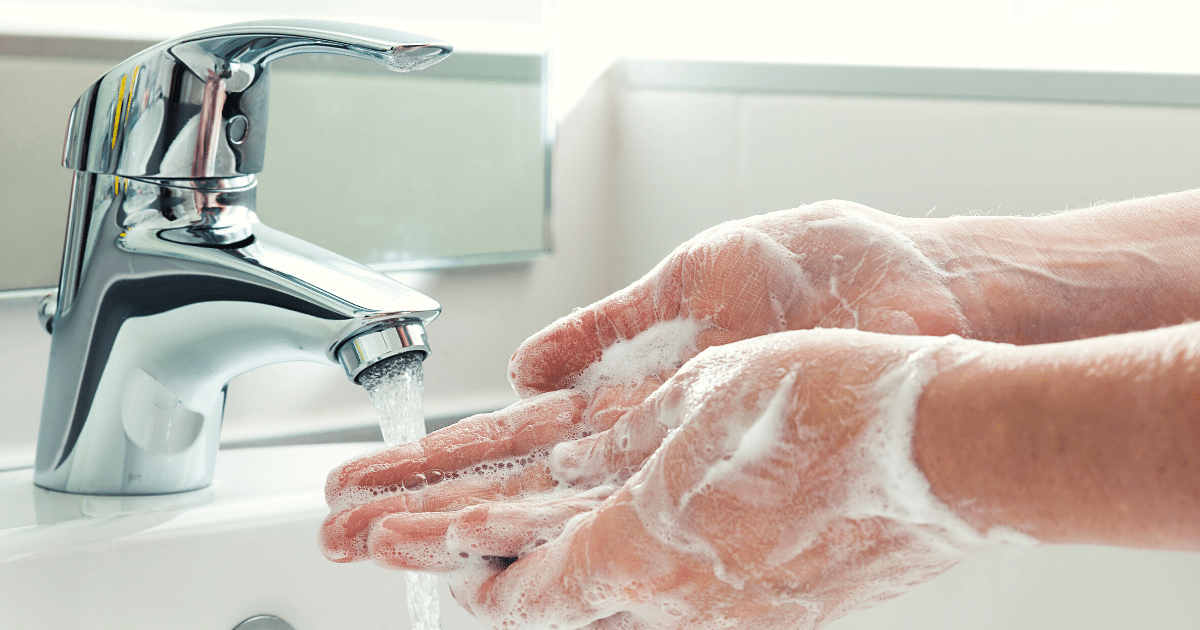
6. Germ Safety
Illnesses, including the flu, coronavirus, and others surge during winter months because we’re usually indoors and in close proximity to others. Be sure to stick to the routine precautions for COVID-19 prevention – including mask-wearing, frequent handwashing, and social distancing – to keep yourself and your family safe. Pandemic fatigue is real, but sticking to the guidelines will keep us all – including our nurses, doctors, and other health care workers – healthy until a vaccine is available.
Many times, making sure your home is prepped for winter hazards means thinking ahead in summer and fall. Keeping up with your yearly inspections can uncover problems with chimneys, heating systems, and your roof that could cause major headaches and damage right when the thermometer is plunging. Taking actions early – and keeping an eye out year-round – will give you peace of mind during the winter so you and your family can enjoy a cozy, serene and safe home.
This article is furnished by California Casualty, providing auto and home insurance to educators, law enforcement officers, firefighters, and nurses. Get a quote at 1.866.704.8614 or www.calcas.com.
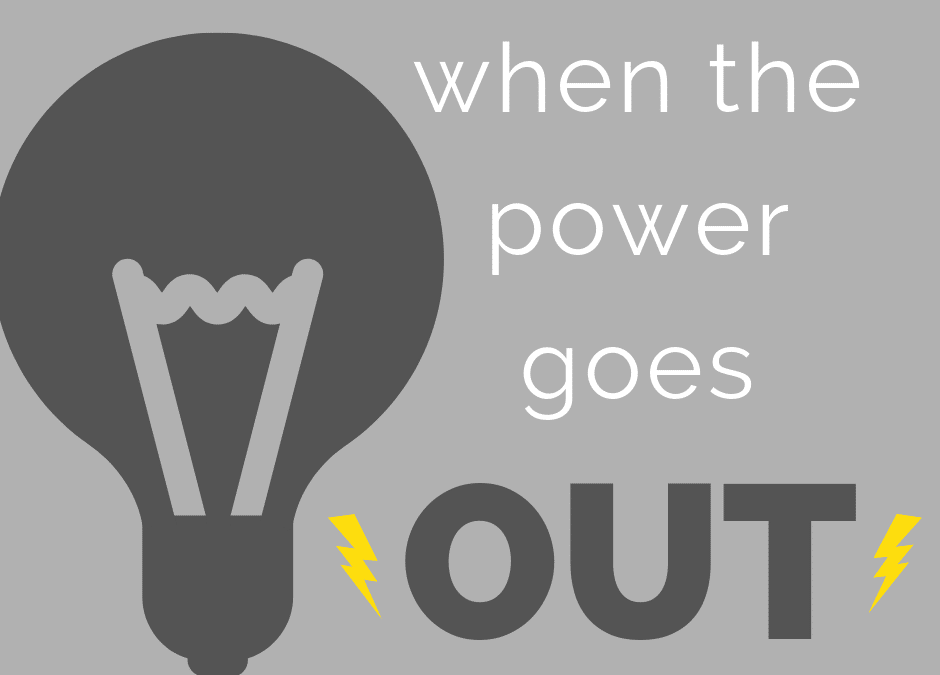
by California Casualty | News, Safety |
California utility companies are taking drastic steps to prevent wildfires by cutting power to up to one million households. Downed power lines or sparks during high winds and red flag fire warnings have been blamed for starting previous fires. The outages could last...
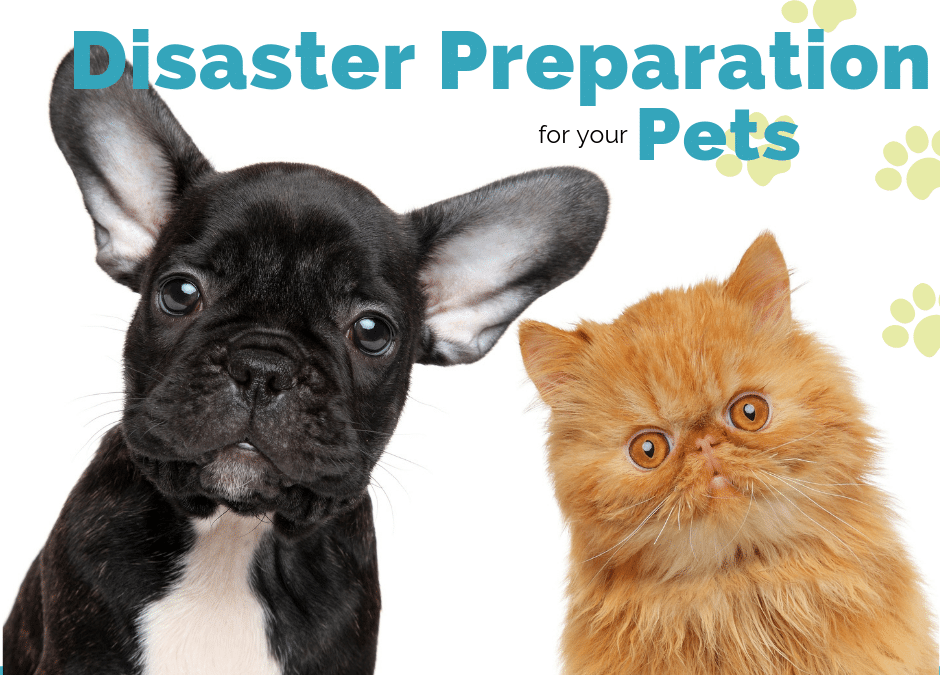
by California Casualty | Auto Insurance Info, Pets, Safety |
Our pets are precious members of the family. We take them on adventures and shower them with treats and love. However, when it comes to disaster situations, our fur babies are often an after-thought, and sadly, many suffer and are left behind when a natural disaster hits.
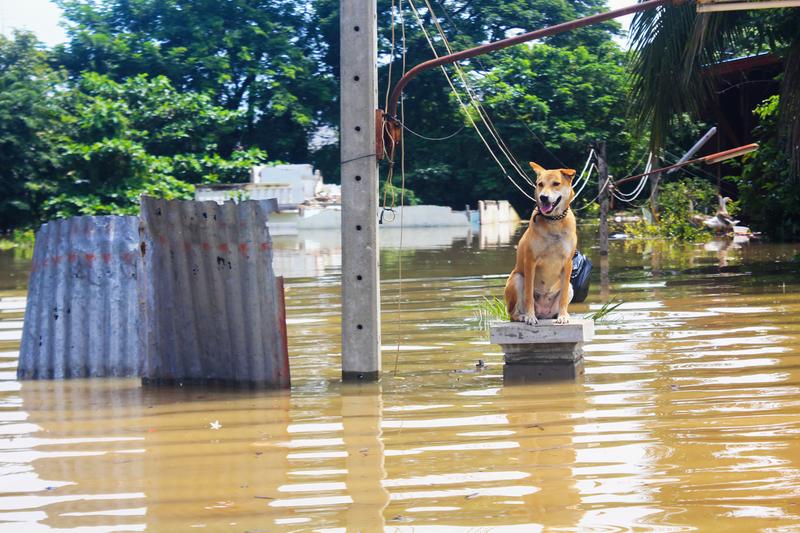
September is National Preparedness Month. Each year we are reminded to prepare ourselves for emergency disasters in our home and communities. So, while you get your emergency plans in place, don’t forget to include your animals!
Take these actions and precautions before a calamity strikes to put your mind at ease and save your pet’s life.
- Have an evacuation plan that includes your pet and it’s necessities. Include food, leash, medications, a blanket (with your scent), water, and copies of vet records and vaccinations.
- Bring your pet inside. If you need to evacuate, have a crate or duffel on hand that you can easily transport them in.
- Place a rescue alert sticker on home door or window. This should be visible to rescuers, in case you are unable to get home. Available online, at pet stores, veterinarians, or from the ASPCA.
- Microchip your pets and update collar tags. Make sure the microchip is registered and up-to-date with your current information.
- Keep in mind many evacuation shelters do not take pets. Research pet-friendly hotels, shelters, and family/friends who will take in you and your pet in a disaster.
- Carry recent pictures of your pet. In case you get separated, keep a good photo of them sitting and standing for size/coat reference.
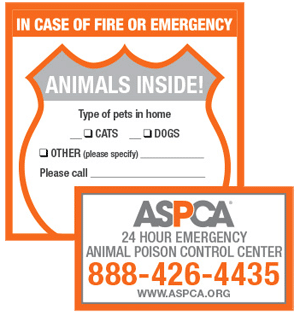
Having a disaster preparation plan in place for your pets will play a key role in saving their life in the event of an emergency. If you need help putting a plan in place, contact BringFido’s Canine Concierge. They will contact hotels and shelters across the nation to help you find somewhere for your pet. Plus, they will even give you advice on disaster preparation for pets!
Remember, pets can sense anxiety and become nervous, especially during high stress times like emergencies. It is important to give them TLC and let them know they will be ok.
This article is furnished by California Casualty, providing auto and home insurance to educators, law enforcement officers, firefighters, and nurses. In the event of a disaster know you and your pet are taken care of by adding Pet Insurance by Pets Best to your existing California Casualty policy and save up to 90% on all emergency vet bills. Get a quote at 1.866.704.8614 or www.calcas.com.
For more information visit:
https://bit.ly/34xLENY
https://bit.ly/34qK2Ft
https://bit.ly/2MTAldi
by California Casualty | Homeowners Insurance Info |
Springtime is tornado season in the United States. Many people have been lulled into false sense of security by the relatively slow start this year. But once again Mother Nature flexed her muscles sending destructive storms roaring through much of the Midwest. As the cleanup of twisted metal and splintered wood continues, it’s a reminder that people in tornado prone areas need to be ever vigilant of the often deadly storms.
Are you ready? A recent survey commissioned by the Property Casualty Insurers Association of America (PCI) found 56 percent of Midwesterners consider themselves not well prepared for the aftermath of a natural disaster or severe weather.
Tornados are violent, abrupt and are often obscured by rain or darkness. Being prepared ahead of time is essential.
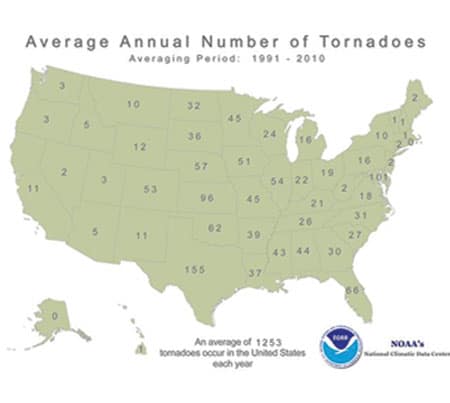
Here is important, potentially lifesaving information about tornados from Weather Underground:
- Develop an emergency plan for your family
- Know where safety shelters are located
- Monitor NOAA Weather Radio when severe weather is forecast
- Know the difference between a tornado watch and warning – a watch means conditions are right for tornado activity and people should be on alert, a warning means a tornado has been sighted and you should take shelter immediately
Here are tornado danger signs:
- Dark, greenish sky
- Large hail
- A large, dark, low-lying cloud that may be rotating
- A loud roar, often compared to a freight train
These are dos and don’ts from the American Red Cross if you are caught in a tornado:
- Do go immediately to an underground shelter, basement or safe room
- Do find a small windowless room in the interior of a home or hallway on the lowest level of a sturdy building
- Don’t stay in a mobile home unless absolutely necessary
- Do stay in your vehicle with the seat belt fastened and your head below the windows, covering your head with a blanket, coat or your hands
- Do go to a low lying area like a culvert or ditch if caught outdoors and cover your head with a coat or your hands
After a tornado:
- Continue listening to local news or a NOAA Weather Radio for updated information and instructions.
- If you are away from home, return only when authorities say it is safe to do so.
- Wear long pants, a long-sleeved shirt and sturdy shoes when examining your walls, doors, staircases and windows for damage.
- Watch out for fallen power lines or broken gas lines and report them to the utility company immediately.
- Stay out of damaged buildings.
- Use battery-powered flashlights when examining buildings – do NOT use candles.
- If you smell gas or hear a blowing or hissing noise, open a window and get everyone out of the building quickly and call the gas company or fire department.
- Take pictures of damage, both of the building and its contents, for insurance claims.
- Use the telephone only for emergency calls.
- Keep all of your animals under your direct control.
- Clean up spilled medications, bleaches, gasoline or other flammable liquids that could become a fire hazard.
- Check for injuries. If you are trained, provide first aid to persons in need until emergency responders arrive.
Some common myths associated with tornados are:
- Leave windows open to equalize pressure
- Tornados don’t hit large cities
- Tornados don’t occur in mountains
- Seeking shelter under an overpass is a safe
There is new information from recent storms that sturdy garage doors may be the best protector of a home. The study of tornado damage found wood frame homes with sturdy garage doors suffered less damage than homes with flimsy garage doors.
The research from the University of Alabama also concluded that tornado shelters – underground or above ground safe rooms – saved lives.
The researchers compared damage from major tornadoes that struck Moore, Oklahoma in 2013 to studies of similar storms that hit Tuscaloosa, Alabama and Joplin, Missouri in 2011.
Some of the conclusions:
- Flimsy garage doors proved to be a weak link, allowing pressurization that destroyed supporting walls and the roof when the garage was breached by devastating winds
- Storm shelters save lives even in the worst tornadoes
- In the areas damaged by lesser winds, the garage was often the root cause for failure of residential structures, allowing roofs and supporting walls to collapse
The study found that increased building safety standards and incorporation of more storm shelters are working to prevent some damage and save lives.
If your property suffers damage from a tornado:
- Secure the property from further damage or theft
- Contact your insurance company as soon as possible
- Inventory losses and take photos
- Save receipts of meals, purchases and hotels related to not being able to live in your home
- Be careful of unscrupulous contractors
This is also a reminder how important it is to take an inventory of your home and possessions before a disaster strikes.
Another way to protect your home is with an insurance policy review. Call a California Casualty advisor today, 1.800.800.9410 or visit www.calcas.com.
This article is furnished by California Casualty, providing auto and home insurance to educators, law enforcement officers, firefighters and nurses. Get a quote at 1.800.800.9410 or www.calcas.com.
Resources for this article:
https://www.nws.noaa.gov/om/severeweather/resources/ttl6-10.pdf
https://www.redcross.org/prepare/disaster/tornado
https://www.wunderground.com/resources/severe/tornado_safety.asp?MR=1
https://www.pciaa.net
https://esridev.caps.ua.edu/MooreTornado/Images/MooreTornadoFinalReport.pdf
by California Casualty | Safety |
Brush off your barbecue grills, stock up on popsicles, and get yourself a new swimsuit because…
Summer has officially arrived!
After a winter with too many snows and a Spring with too much rain, I am ready for summer. If your neighborhood is anything like mine, then the arrival of summer means:
Pool Season!
In the excitement of summer, it’s tempting to throw on a suit and jump on in…
but wait!
For most of us, it’s been about a year since we dipped our toes in the water. Before you and your family cannonball in, make sure you review these Pool Safety Tips to be sure you enjoy your summer safely!
Did you know: A child can drown in the time it takes to answer a telephone. More than 200 young children drown in backyard swimming pools each year.
Swim Safety Basics:
- Swim only in designated areas
- Make sure a lifeguard or responsible adult trained in CPR and first aid is present and attentive at all times
- A child who is drowning may not look like the ‘drowning’ we see in TV and movies. Before you swim with a child, please read this article about what drowning looks like and how to spot it. Read it by clicking here.
- Maintain constant eye-to-eye supervision with children in and around the swimming pool
- Stay in arm’s reach of young kids
- Establish and enforce clear pool safety rules (ex: No diving, Stay away from drains, no running, etc.) Post these rules where everyone using the pool can read them
- Never leave a young child unattended in or near water
- Do not trust a child’s life to another child
- Teach children to ask permission before going near water
- Issue the adult supervisor an item such as a whistle, bracelet, etc. to reinforce which adult is in charge of the safety of the children
- Make sure young or inexperienced swimmers are wearing US Coast Guard-approved life jacket. Floaties or other inflatable flotation devices are not life jackets and should never be substituted for adult supervision.
- Avoid distractions when supervising children around water. Remove children from the swimming pool for any distraction such as a telephone call, use of restroom, etc.
- Keep children away from pool drains, pipes and other openings to avoid entrapments. Here are some tips to review in case someone becomes entrapped.
- If a child is missing, check the water first– every second counts!
- Never permit any person to swim alone
- Have appropriate equipment, such as reaching or throwing equipment, a cell phone, life jackets and a first aid kit, within a reachable distance- not inside!
- Know how and when to call 9-1-1
- Keep your pool clean and clear by maintaining proper chemical levels, circulation and filtration. This way, you can clearly see what is happening in the pool and minimize risks of earaches, rashes or diseases
- Make sure everyone in the home knows how to respond to water emergencies by having an emergency plan in place with your children
- Protect your skin! Limit the amount of direct sunlight you receive between 10:00 a.m. and 4:00 p.m. and wear sunscreen with a protection factor of at least 15
- Stay hydrated: Drink plenty of water regularly, even if you’re not thirsty. Avoid drinks with alcohol or caffeine
- If it’s your pool:
- Have a fence enclosure that isolates your pool from the home, play areas, front and side yards and the neighbor’s yard
- Make sure all gates in the isolation fence are self-closing and self-latching
- All chairs, tables, large toys or other objects that would allow a child to climb up to reach the gate latch or enable the child to climb over the isolation fence should be removed or kept inside the fenced area
- Keep the following items away from the water:
- Tricycles or riding toys
- Electronic devices
- Any and all pool toys when the pool is not in use
Resources:












